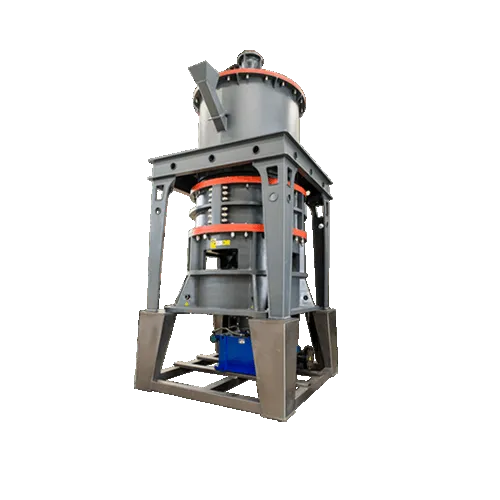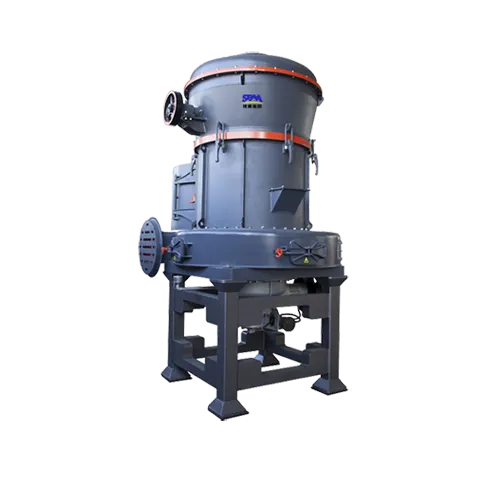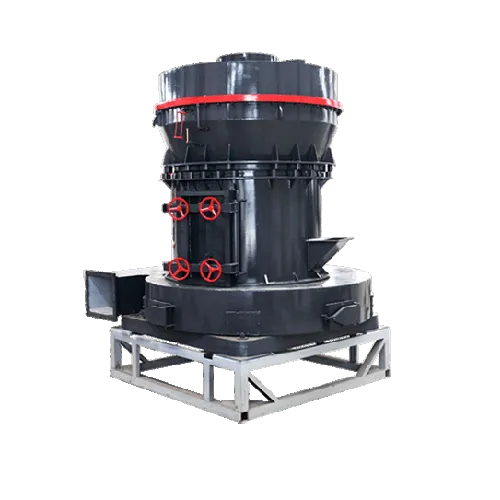Summary:Paper is composed of fibers, but for some papers, it is difficult to achieve the purpose of using paper only composed of fibers. For this reason, for cultural p
Paper is composed of fibers, but for some papers, it is difficult to achieve the purpose of using paper only composed of fibers. For this reason, for cultural paper, printing paper, decorative base paper, white cardboard, cigarette paper, etc., Part of the filler must be added to the pulp to meet the requirements of the paper.
The Main Function Of Filler
1) Improve the whiteness of paper, because the whiteness of filler is higher than that of pulp;
2) Improve the opacity of the paper;
3) Improve the smoothness of the paper;
4) Improve the softness of paper;
5) Improve the printing performance of sheets;
6) Reduce the degree of deformation of the paper, that is, improve the flatness and shape stability of the paper;
7) Reduce resin barriers;
8) Meet the special requirements of some papers;
Types and Properties of Fillers
The main types of fillers used in papermaking in my country are talc, china clay, calcium carbonate (PCC/GCC), titanium dioxide and yellow iron oxide pigments.
1. Talc
Talc is a kind of layered silicate mineral. The functional properties of talc mainly come from its structural characteristics: lipophilic, hydrophobic and lamellar structure. Talc's chemical stability, low hardness, lubricity, lamellar structure, lipophilicity, hydrophobicity and other structural characteristics determine that it is a rare functional papermaking mineral material. In my country, more than 50% of talcum powder output is used in the paper industry. Mainly used for papermaking fillers, a small amount used for papermaking resin (viscosity) control agent and paint pigments. Talc can make the paper smooth, heavier, and enhance the absorption capacity of printing inks and pigments.
Different types of talc have different characteristics and are suitable for different paper products. Low-grade talc and its compound processed products will be mainly used for ordinary papermaking fillers; mid-grade talc is mainly used for high-quality functional papermaking fillers and primer coatings; high-quality talc is mainly used for viscosity that can better reflect its functional characteristics Control agent products and coating products. And after superfine processing, talc has good adsorption and covering properties. At present, the new talc products that can be used in the paper industry mainly include cationic modified talc, paraffin wax and AKD modified talc, black talc, magnesia-aluminum hydrotalcite, etc.
2. Porcelain clay (kaolin)
Kaolin is mainly used in papermaking fillers and surface coating pigments in the papermaking industry. Its characteristics have a great influence on the operability of papermaking and the quality of paper. According to different processing methods and product characteristics, kaolin for paper coatings is divided into water-selected kaolin and calcined kaolin. Among them, calcined kaolin is a functional material for papermaking with high whiteness, porosity and certain adsorption. According to the different sintering temperature, it can be divided into incomplete calcined kaolin (600-800℃) and completely calcined kaolin (950-1050℃). ). The former is mostly used for papermaking fillers, and the latter is mostly used for papermaking coating materials. Its functionality mainly comes from the process of kaolinite (soil) roasting, dehydration and deorganization. The porosity of the structure after roasting can improve the bulk, opacity, and ink absorption of the paper.
Kaolin is one of the most consumed white non-metallic mineral materials in the papermaking industry. More than 75% of the world's refined kaolin is used for papermaking.
3. Wollastonite
Wollastonite is different from traditional fillers. It is not a simple filling when added to paper. It is interwoven with plant fibers by virtue of its high aspect ratio to form a "plant fiber-mineral fiber" network structure, thereby partially Replace plant short fiber. Wollastonite is used in papermaking and has the advantages of increasing paper opacity, reducing production costs, improving uniformity, and improving printability.
Fibrous wollastonite has many special properties that cannot be replaced by traditional fillers, and is suitable for replacing traditional fillers in cultural papers and some special papers and high-grade papers. The use of chemical modification technology to reduce product wear, improve fiber flexibility, and how to fully dissociate fiber bundles while maintaining fiber length is an important research field in the current wollastonite processing.
4. Calcium Carbonate
Calcium carbonate is divided into light (PCC) and heavy (GCC) (grinding). Generally, the calcium carbonate used in the production of paper is light calcium carbonate (also called precipitated calcium carbonate), and it is used as a pigment for coating. GCC is used for calcium carbonate. .
Light calcium carbonate: Light calcium carbonate used in papermaking is mainly made of limestone, which is calcined and digested in a lime kiln. Under certain conditions, it is formed by carbonization reaction.
Advantages of light calcium carbonate:
As my country's paper industry has long used acidic sizing methods, calcium carbonate cannot be used as a filler for paper (cigarette paper has long used calcium carbonate as a filler because it is not sizing).
Due to the shortcomings of acid sizing and the emphasis on environmental protection, as well as the research and development of neutral sizing agents, the current world-wide paper sizing process has gradually developed from acid sizing to slightly acidic, medium (alkaline) sizing. This makes calcium carbonate be used and developed as a papermaking filler.
The Advantages Of Using As A Paper Filler Are:
1) Make the paper have higher whiteness;
2) Make the paper have higher opacity;
3) Good coverage;
4) High bulk;
5) Good printing adaptability and ink absorption;
6) Excellent air permeability;
7) Good combustion-supporting performance;
Light calcium carbonate is an excellent filler for cigarette paper, but in the production process of light calcium carbonate, due to different technological conditions, the crystal structure, particle size, and distribution of calcium carbonate are different. Strength and air permeability have obvious effects.
For a relatively long period of time, we did not pay enough attention to this. With the in-depth development of the market economy and the impact of foreign high-end cigarette papers (high strength and high air permeability) on the Chinese market, companies that produce high-end cigarette papers There is a consensus on the quality requirements of light calcium carbonate used in the production of high-end cigarette paper. At present, attention has been paid to the production process of light calcium carbonate used in high-end cigarette paper and research and development have been carried out. This is a welcome progress.
In the near future, my country will be able to produce light calcium carbonate suitable for high-end cigarette paper.
Among the above quality indicators, mainly the sedimentation volume and iron content, and there are strict requirements on the content of free alkali. Generally, the content of free alkali (calculated as CaO) is required to be less than 0.1%.
Heavy calcium carbonate: Heavy calcium carbonate is generally not used as a filler in papermaking, but only for coating pigments. Because heavy calcium carbonate is produced by grinding method, its shape is irregular, such as prism, flake, rhombus, partial triangle volume, etc. It has better ink absorbency than PCC during printing, and its viscosity is lower than PCC. .
There are more companies producing ground (heavy) calcium carbonate, and their product quality indicators are not uniform. Generally, heavy calcium carbonate has the following specifications:
1) Pd-40: It is made by dry pulverization, the whiteness is about 98%, the content of 2μm is more than 40%, and the content of 15μm is zero;
2) Pd-60: It is made by wet grinding, the whiteness is above 94%, the content of 2μm is 55%~56%, and the particle size distribution is relatively narrow;
3) Pd-90: It is made by wet grinding, the content of 2μm is 88%~92%, the whiteness is better than Pd-60, the particle size distribution is narrower, and it has better dispersibility.
5. Titanium Dioxide
The trade name is titanium dioxide, which is processed and refined from ilmenite (FeO.TiO2). The refractive index to light is as high as 2.55~2.70, and the whiteness is high. The covering performance on paper ranks first among all fillers, but it is expensive .
Titanium dioxide has rutile and anatase types. Their chemical properties are different. The former is poorly water-soluble, so the paper industry (especially tissue paper) uses the latter as a filler.
6. Iron Oxide Pigment
The iron oxide pigment used as filling for some special paper is a kind of inorganic pigment, and it is not widely used at present. It is a part of iron-based pigments. Generally, only iron oxide red, iron oxide yellow, and iron oxide black are used. Four kinds of iron palm.
The common feature of iron oxide color material is that it is insoluble in water and has no affinity with pulp fiber. Instead, it relies on the role of alum to fix on the fiber to obtain color and at the same time play a role in filling. Iron oxide pigments have strong light resistance and good hiding properties.
Iron oxide pigment acts as a filler in high-grade decorative base paper (or tipping base paper), and can also partially replace expensive titanium dioxide. At the same time, it also plays a role in dyeing, which can replace expensive and highly polluting organic dyes.
7. Bentonite
Bentonite is a hydrous aluminosilicate mineral containing a small amount of alkali and alkaline earth metals. Its multiple properties, such as large specific surface area, high dispersion and thixotropy, make it exhibit considerable advantages when applied to the paper industry in a variety of applications. For example, when used as a papermaking filler, it has high whiteness and purity, and the use of a large amount of addition will not reduce the strength and tear of the paper; when used as a papermaking coating, it can improve the water retention and suspension of the coating. And rheological properties. After separation, purification and modification, the various properties of bentonite are greatly improved, and it can be made into deep-processed products such as sodium-based bentonite, granular bentonite, and organic bentonite. The modified bentonite has better adsorption and dispersion properties, and has a higher retention rate than talc powder, and has less influence on the strength of the paper.
8. Diatomaceous earth
The domestic paper industry mainly uses the technological characteristics of diatomaceous earth such as large porosity, strong adsorption, small bulk density, heat insulation, sound absorption, chemical stability, and non-toxicity to produce filter paper and cardboard for liquid beverages, sugar, and wine industries. It is also used in construction. Decorative cardboard, battery separator, high-absorbent paper, flame-retardant paper, pet pad paper, waste water purifier, coagulant, etc.; after organic modification, it can also be used as a micro-retention and filter aid. Diatomite ore has many impurities. In order to improve its functional performance, diatomite is usually modified.
Reasonable Selection Of Fillers
1) Talc
Because talcum powder has the characteristics of fine texture, high whiteness, good coverage, low abrasion, and high smoothness and glossiness of talcum powder, and the price is low, general cultural paper and printing paper use talcum powder as filler; Talc has good chemical stability, so dispersed rosin is used as acid sizing for sizing, and talc is used.
The calcium carbonate content in talc is generally required to be less than 2.5%, and the most is less than 1.5%%, because higher calcium carbonate content is not good for sizing and dyeing. For decorative base paper, high calcium carbonate content is harmful to subsequent The processing procedure has an adverse effect; the powder, as a white pigment for coating, has an adverse effect on the whiteness of the coating.
According to research, the whiteness value decreases by 1.0% for every 10% increase in its dosage. The reason is that talc is slightly hydrophobic and therefore has poor dispersibility in the coating system. The fine talc particles are easy to trap air and form small bubbles. , When the phenomenon of aggregation occurs, the coating will be uneven, so try not to use (less use) talc as a pigment in the production of coated paper.
2) Calcium Carbonate
In the application of new medium (alkaline) sizing agents such as AKD, the filler calcium carbonate, which is difficult to apply in acidic papermaking, has its own use. The refractive index of calcium carbonate is as high as 1.65, which can significantly improve the whiteness and opacity of paper. .
In the pH range of 7.5 to 8.5, calcium carbonate has good stability, so papers with medium (alkaline) sizing use calcium carbonate as filler; for tissue paper, such as cigarette paper, printing tipping paper, etc., Due to the requirement of high opacity, calcium carbonate is used as the filler. For some papers with high printing performance requirements, calcium carbonate can also be used as the filler.
Because calcium carbonate’s low ultraviolet absorption is beneficial to improve the aging of paper, for some papers that need to be stored for a long time (collection), calcium carbonate is used as filler; for acid-sized paper, calcium carbonate cannot be used as filler; calcium carbonate can be used in large quantities Used as the color pigment for coated paper, ground calcium carbonate is cheap, the coating fluidity is good, and its printing performance is better than PCC, so the white coating is mostly ground calcium carbonate;
3) Titanium Dioxide
Due to its high refractive index and high whiteness (97%~99%), its hiding power ranks first among pigments (fillers). For this reason, it is used in the production of high-grade tissue paper or high-grade coated paper, but due to its high price , For this reason, the amount is less;
4) Porcelain Clay
Due to the good chemical stability of porcelain clay and its sheet structure, it can improve the smoothness and gloss of paper. Therefore, it can be used as a filler for various papers. It is only suitable for fillers for acid sizing paper, but due to its relatively high viscosity , So it can be added in a small amount, for example, it can be used with talcum powder; it can be used as a white pigment for coating. ) The better its gloss and smoothness.
5) Iron Oxide Pigment
It is suitable for the production of tissue paper, such as high-grade decorative base paper and tipping base paper, which is the characteristic of its high coverage.
Papermaking is a complex process. Different paper varieties have different quality requirements. To meet certain requirements of paper, fillers must be added. There are many types of fillers, each with different properties, and different paper varieties and technological conditions. Different fillers or combinations of fillers must be selected in order to obtain the best results.
Read More About



